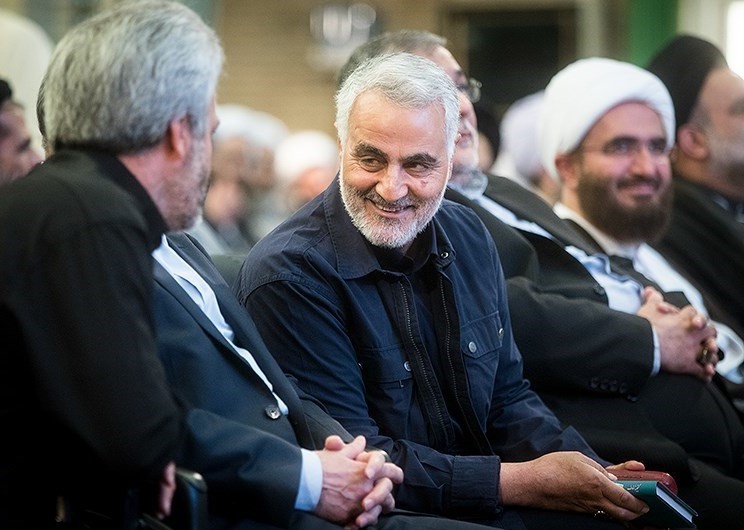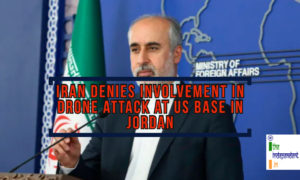
In a major escalation to the ongoing tension between Islamic Republic of Iran and the United States (U.S.), the Pentagon has confirmed that U.S. forces have killed Iranian Major General in the Islamic Revolutionary Guard Corps (IRGC) and Commander of its Quds Force – Qasem Soleimani in the air raid today, i.e., Friday, January 3, 2020.
The air raid was carried out on the orders of President of U.S. – Donald Trump at Baghdad International Airport in Iraq. The raids were a part of defensive action to protect U.S. personnel and Embassy from future attacks. In addition, the Deputy Head of the Iran-backed Iraqi Popular Mobilization Forces (PMF) – Abu Mahdi al-Muhandis has also been killed.
PMF is an Iraqi state-sponsored umbrella organization composed of some 40 militias that are mostly Shia Muslim groups. It was formed in 2014 to fight against Islamic State of Iraq and the Levant (ISIL). It was recognised under a 2016 Iraqi law as an independent military force that answered directly to the then Prime Minister of Iraq – Haider al-Abadi.
Hours before targeting Soleimani, U.S. had issued a stern warning to Iran-backed militias amid concerns they may conduct further provocations against the U.S. following their attempt to storm the U.S. embassy in Baghdad.
A statement from Pentagon read, “A Pentagon statement said: “At the direction of the President, the US military has taken decisive defensive action to protect US personnel abroad by killing Qasem Soleimani.”
It further added, “This strike was aimed at deterring future Iranian attack plans. The United States will continue to take all necessary action to protect our people and our interests wherever they are around the world.”
The U.S. believes that Soleimani and his Quds Force, a unit in IRGC which is responsible for carrying out unconventional warfare and intelligence activities, were responsible for the deaths of hundreds of American and coalition service members. The airstrikes come in the wake of rocket attack over an Iraqi military base on December 27, 2019, which killed a U.S. civilian contractor and left 4 other U.S. workers injured. In retaliation, on December 29, 209, U.S. forces carried out airstrikes in Iraq and Syria, targeting pro-Iran militia bases of Kataib Hezbollah which was headed by Abu Mahdi al-Muhandis. This was followed by pro-Iran militias storming the U.S. embassy in Baghdad.
A 3-day national mourning has been declared in Iran in honour of Soleimani. The Supreme Leader of Iran – Ali Khamenei has vowed to take revenge.
Speaking on the occasion, Ali Khamenei said, “The Supreme Leader also said the fight would continue. “All friends – as well as all enemies – know that the path of Resistance will continue, and definite victory awaits the mujahideen on this blessed path.”
He further added, “For years it was his wish to become a martyr, and finally God granted him his highest office.”
Ali Khamenei also posted a tweet which said, “Dear Iranian Nation! Years of sincere, brave efforts fighting against the devils& villainous in the world & yrs of wishing for martyrdom on the path of God finally took the dear Commander of Islam, Soleimani, to this lofty status. His blood was shed by the most barbaric of men.”
Condemning the attack, the Minister of Foreign Affairs of Iran – Javad Zarif has blamed the U.S. for unnecessarily escalating the rising tensions between Iran and U.S.
He tweeted, “The US’ act of international terrorism, targeting & assassinating General Soleimani—THE most effective force fighting Daesh (ISIS), Al Nusrah, Al Qaeda et al—is extremely dangerous & a foolish escalation. The US bears responsibility for all consequences of its rogue adventurism.”
Immediately after the killing of Soleimani, oil prices jumped more than 4%, raising concerns that escalating Middle East tensions may disrupt oil supplies. Brent Crude Futures, a global benchmark, jumped 2.9% to U.S. $ 68.16 per barrel during Asian trading hours. The U.S. oil futures gained 2.8%, reaching U.S. $ 62.86 per barrel.
For the records, the tensions between Iran and U.S. have been rising ever since the U.S. abandoned the JCPOA deal in 2018. The deal was reached in Vienna on July 14, 2015, between Iran, the P5+1 (the permanent members of the United Nations Security Council—China, France, Russia, U.K., U.S. – plus Germany) and European Union (E.U.). As per the agreement, Iran agreed to eliminate its stockpile of medium-enriched uranium, cut its stockpile of low-enriched uranium by 98%, and reduce by about 2/3rd the number of its gas centrifuges for 13 years. For the next 15 years Iran was required only to enrich uranium up to 3.67%.
The relations got worse when Iran, in response to U.S.’s withdrawal, produced low-enriched uranium beyond the permissible limits of JCPOA. Post this, the relations turned hostile after Iran claimed they have downed a U.S. drone on June 20, 2019 over the Strait of Hormuz. This was followed by downing of an Iranian drone by USS Boxer, an amphibious assault ship of U.S. Navy, on July 19, 2019, in the Strait of Hormuz.
Further to this, Trump announced to imposed sanctions on countries who import oil from Iran. Iran is the South Asian nation’s 3rd largest supplier of crude oil, after Iraq and Saudi Arabia. China, India, Japan, South Korea and Turkey are the biggest importer of Iranian oil. Iran has accused U.S. of promoting economic terrorism against it. Further, Iran is experiencing civil unrest, owing to an announcement by Government to increase the prices of petrol by 50% and has put a capping on the sale of fuel.







